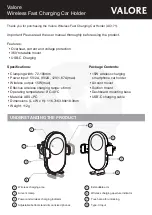
23
Governments around the world have adopted
comprehensive international safety guidelines,
developed by scientific organizations, e.g. ICNIRP
(International Commission on Non-Ionizing Radiation
Protection) and IEEE (Institute of Electrical and
Electronics Engineers Inc.), through periodic and
thorough evaluation of scientific studies. These
guidelines establish permitted levels of radio wave
exposure for the general population. The levels include a
safety margin designed to assure the safety of all
persons, regardless of age and health, and to account
for any variations in measurements.
Specific Absorption Rate (SAR) is the unit of
measurement for the amount of radio frequency energy
absorbed by the body when using a mobile phone. The
SAR value is determined at the highest certified power
level in laboratory conditions, but the actual SAR level of
the mobile phone while operating can be well below the
value. This is because the mobile phone is designed to
use the minimum power required to reach the network.
All models of Huawei’s mobile phone are designed to
meet radio frequency exposure guidelines. Before a
phone model is available for sale to the public, it must be
tested and certified to the FCC that it does not exceed
the limit established by the government-adopted
requirement for safe exposure. The tests are performed
in positions and locations (that is, at the ear and worn on
the body) as required by the FCC for each model. For
body worn operation, this phone has been tested and
meets FCC RF exposure guidelines when the handset is
positioned a minimum of 20 mm from the body with an
accessory that contains no metal part. Use of other



































